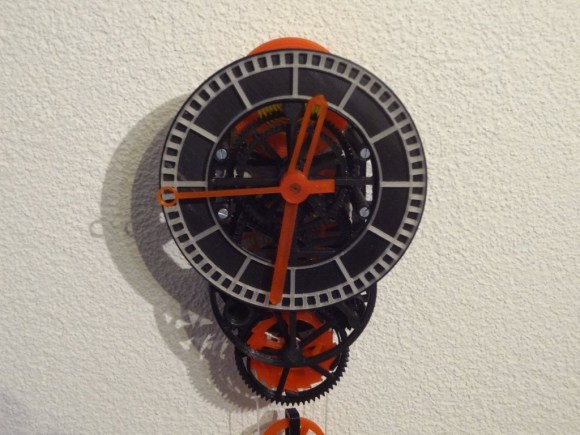Projects can often spiral, not down or up, but out. For [Derek] he started playing around with a 3D printed escapement mechanism and thought it was a wonderful bit of engineering. But with a simple drum and weight, it only had a runtime of a few minutes. What started as a simple “can I make it run longer” spiraled into a full-blown beautiful grandfather clock.
A gear drive, a ratcheted winding sprocket, and a ball chain gave the clock about one hundred minutes of runtime. Adding a recharging mechanism was fairly straightforward. The weight automatically rewinds with the help of an ESP32, a motor, and some limit switches. While an ESP32 is absolutely overkill for this simple project, it was cheap and on hand. A quick hall effect sensor to detect the pendulum passing made it into a proper clock. Considering it’s a printed plastic clock, losing only 2-3 seconds per day is incredibly good. The whole thing is wrapped in a gorgeous wood case with a distinct design.
Surprisingly, everything was designed in OpenSCAD and Blender. [Derek] includes some great tips such as cleaning out the ball bearings to make them run smoother and suggestions on how to make a plastic clock move without binding. Clock making is a complex and sometimes arcane art, which makes watching the process all the more interesting.












